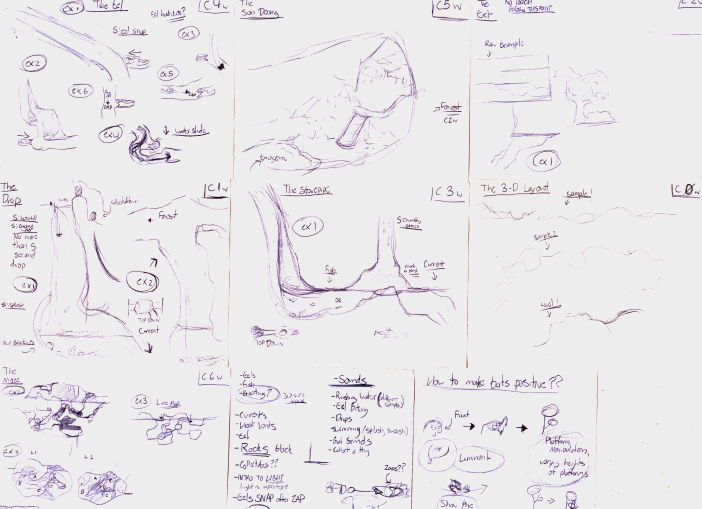Hey, everyone! Phoenix here. In one of our previous posts, we posted a sound clip we recorded while we were in Crystal Caves. In case you missed it, close your eyes and take a listen:
(If the player is not working, download the audio file here!)
Really brings you there huh?
It might be something you take for granted while playing games, but audio like this is what really helps pull you into the experience. If you can, try sometime to play a game without the audio on and you might understand where I’m coming from.
This leads me into sound design for games. Sound in games tends to be a part of game design most people don’t consider as it’s something we don’t usually actively notice it while playing a game. This is because sound is a very subtle way of breathing life into the game, usually in tandem with action. It’s also a way of giving character to a game and to put things in context. A door can take on many different meanings depending on how the door sounds when it opens, when it closes, when it’s knocked on: you can tell whether it’s metal, wood, thick, thin… Kind of funny how much you can tell about something just from how it sounds. In tandem with graphics in animation, it can really make a game object convincing!
Not only this, but it can also provide players with information even when they aren’t looking. With so much going on in one screen, sometimes those little audio cues can help. For example, having a jump sound will let a player consistently know if their character jumped, even without having to look. With these audio cues letting us know what’s going on, it becomes easier for players to pay attention to other things in the environment or for players to tune into events happening in the game world. Audio certainly does a lot for players!
Now how does this tie into level design?
As part of the design team, I’ve worked closely with them to help develop some ideas for how the world is set up and how to help players build skills they’ll need later in the game.

This is an example of some of the level design I’ve worked on for the game. If you’ll take a look, you’ll notice on a few of the images I have labels such as “S: Waterfall.” This is what I use to keep track of what sounds we’ll need. While designing a level or even portions of a level, it’s important for me to keep track of potential sounds we need for the game so labels like these can help with that task. Every thing we add bumps up the number of sounds we need until we get a list something like this:

This isn’t even the whole list and it’s already quite a lot!
With so many different sound effects to include it’s important to keep track of them in a list like this. This ties into level design with keeping track of all of the features of a level, from environments to objects to creatures. When something is added into a game, more than likely it will need a list of sounds to accompany it. This can range from the short list the mole has, to the lengthy list the player has, to anywhere above that! By keeping track of what’s going on in a level or in a feature in the game, it helps ensure you develop the list of sounds you need. In the end, your game could have dozens or even hundreds of different sounds and it’s important you make sure the sound is there. The player is listening.
